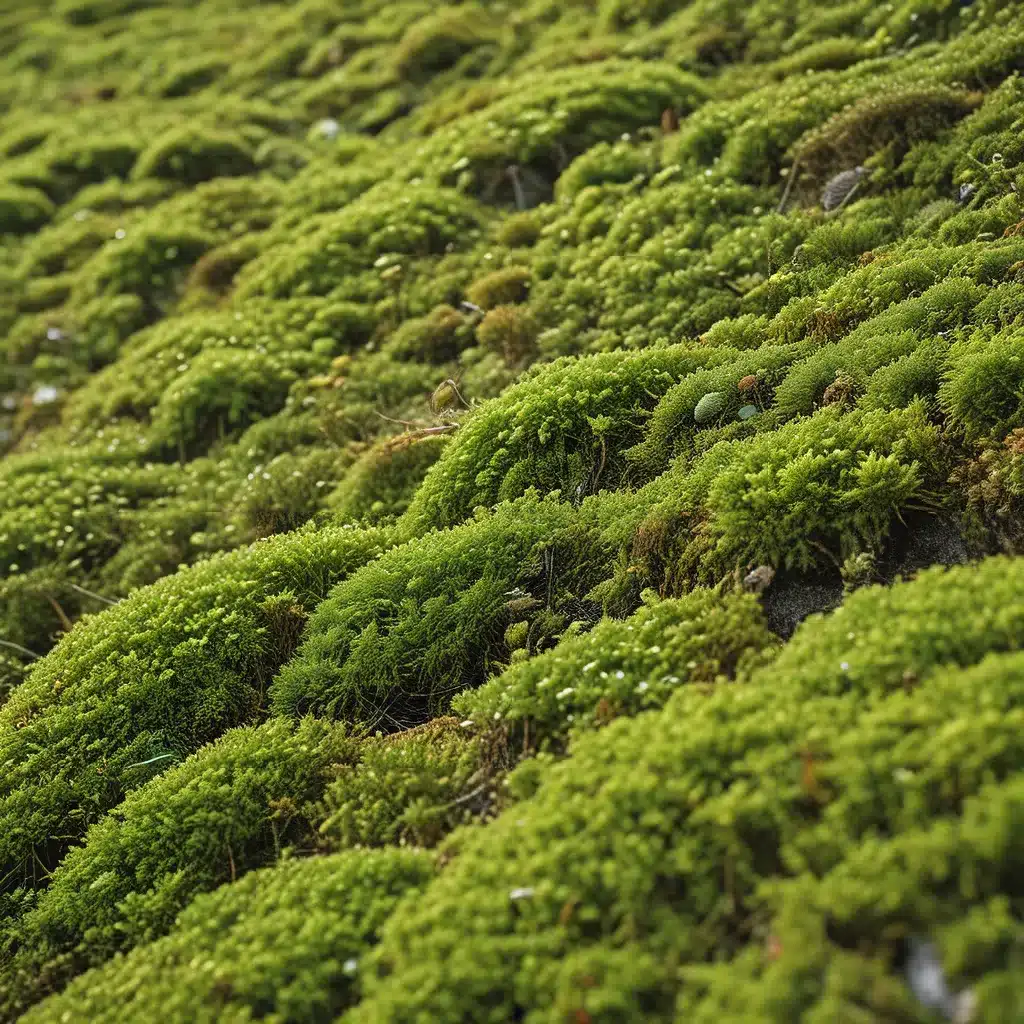
Ah, the joys of homeownership – the pride, the satisfaction, the constant battle against Mother Nature herself. And when it comes to the leafy, slimy scourge known as moss, the fight can feel downright Sisyphean. But fear not, my fellow roofing enthusiasts, for I have ventured into the murky depths of moss-related research to bring you the ultimate guide to conquering the curse.
Let’s start with the basics: what is this pesky vegetation, and why does it seem to have a vendetta against our pristine shingles? Moss is a non-vascular plant that thrives in damp, shaded environments. It’s nature’s way of saying, “Hey, your roof looks a little too clean – let me fix that for you!” And fix it, they shall, with their insidious, carpet-like growth that can wreak havoc on your home’s structural integrity.
But the story doesn’t end there, my friends. Oh, no, it gets worse. As the moss proliferates, it can actually retain moisture on your roof, leading to the dreaded formation of lichen and algae. These uninvited guests are not only unsightly, but they can also accelerate the deterioration of your roofing materials, putting your home at risk of leaks, water damage, and even structural collapse. It’s a veritable nightmare scenario, and one that no responsible homeowner should ignore.
The Moss Menace: Uncovering Its Causes and Effects
Now that we’ve established the grave threat that moss poses to our roofs, let’s dive a little deeper into the root causes of this problem. As I mentioned, moss thrives in damp, shaded environments, which means that certain geographic locations and architectural features can make your home more susceptible to an invasion.
For example, if you live in a humid, temperate climate with plenty of tree cover, you’re prime real estate for moss. And if your roof has dormers, valleys, or overhanging branches, you’re practically rolling out the welcome mat for these verdant interlopers. It’s a perfect storm of conditions that can turn your once-pristine roofing into a veritable moss-covered masterpiece.
But the consequences of this moss mania go far beyond the aesthetic concerns. As these slimy hitchhikers take up residence, they can wreak havoc on your roofing system. The root systems of moss can penetrate the shingles, tiles, or other roofing materials, causing cracks, splitting, and overall structural degradation. And as the moss retains moisture, it can accelerate the corrosion of metal components, like flashing and gutters, leading to leaks and water damage.
Battling the Moss: Strategies for a Roof-Saving Showdown
Alright, now that we’ve thoroughly terrified you with the horrors of moss, let’s talk about how to fight back. Because, my friends, this is a battle we can win. With the right tools and techniques, we can reclaim our rooftops and restore the glory of our shining, moss-free abodes.
The first line of defense is prevention. By maintaining your roof and keeping it clean, you can discourage the growth of moss in the first place. This means regularly inspecting your roofing materials for cracks, gaps, or other vulnerabilities that could invite the moss menace. And don’t forget to clear away any overhanging branches or debris that could provide the perfect breeding ground for these green interlopers.
But sometimes, prevention just isn’t enough. If the moss has already taken hold, you’ll need to take more _drastic measures. One of the most effective methods is chemical treatment, using moss-killing solutions specifically formulated for roofing applications. These potent potions can eradicate the moss and prevent its return, without causing damage to your roofing materials**.
And if chemical warfare isn’t your cup of tea, mechanical removal is always an option. This hands-on approach involves physically scrubbing the moss off your roof, using a stiff-bristled brush or pressure washer. Just be careful not to damage the roofing materials in the process.
Maintaining a Moss-Free Masterpiece: Long-Term Roofing Solutions
Alright, so we’ve conquered the moss and restored our roofing to its former glory. Now what? Well, my friends, the battle is far from over. To ensure that moss doesn’t return to haunt our dreams, we need to implement some long-term roofing solutions.
One key strategy is to improve the drainage and ventilation of your roof. By ensuring that water doesn’t accumulate and that air can circulate freely, you can create an environment that’s inhospitable to moss. This might involve installing additional gutters, increasing the pitch of your roof, or adding roof vents.
Another crucial step is to choose roofing materials that are resistant to moss and algae growth. Metal roofs, for example, are a popular choice, as they don’t provide the same level of moisture retention as traditional asphalt shingles. And high-quality synthetic or composite roofing can also be a great option.
Finally, regular maintenance and professional inspections are essential for keeping your roof moss-free. Schedule annual checkups with a reputable roofing contractor to identify and address any issues before they become a major problem. This proactive approach can save you time, money, and a whole lot of headaches in the long run.
Southern Roofing Company is here to help you conquer the curse of moss-dwelling vegetation and keep your roof in tip-top shape. With our expert advice and top-notch roofing services, you can bid farewell to the moss menace and welcome a pristine, long-lasting roofing system. So don’t let the moss win – fight back and reclaim your rooftop today!